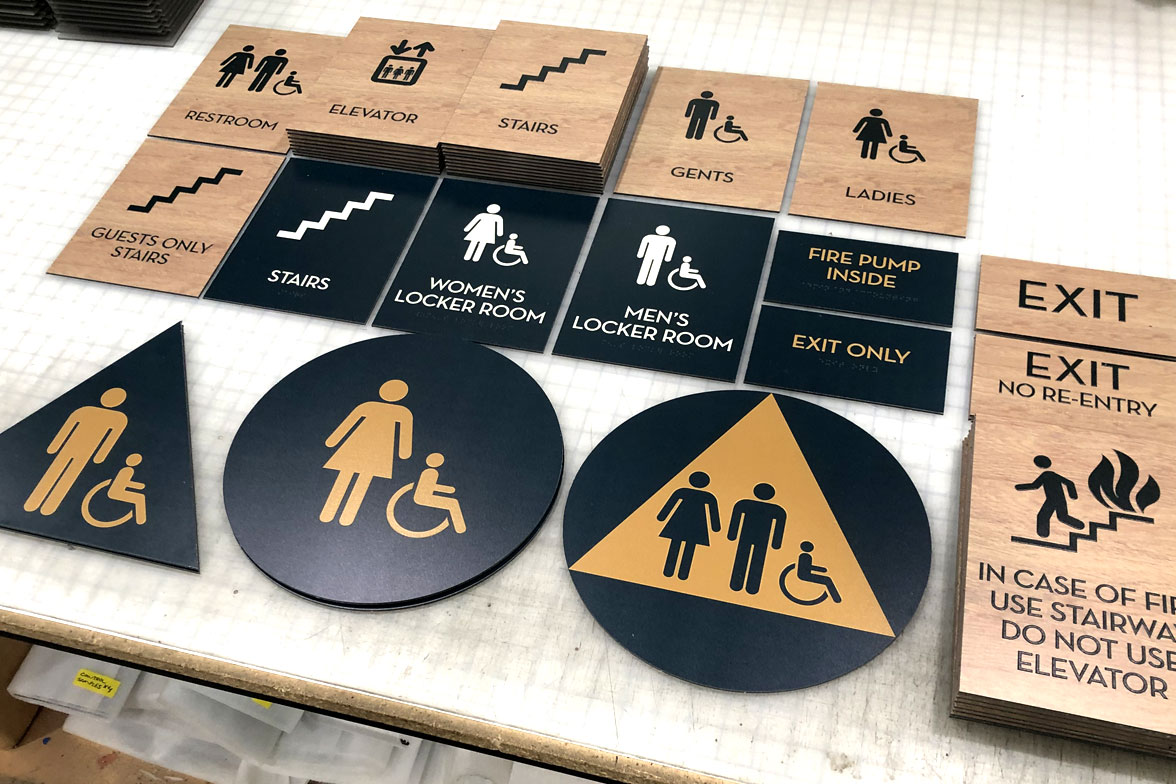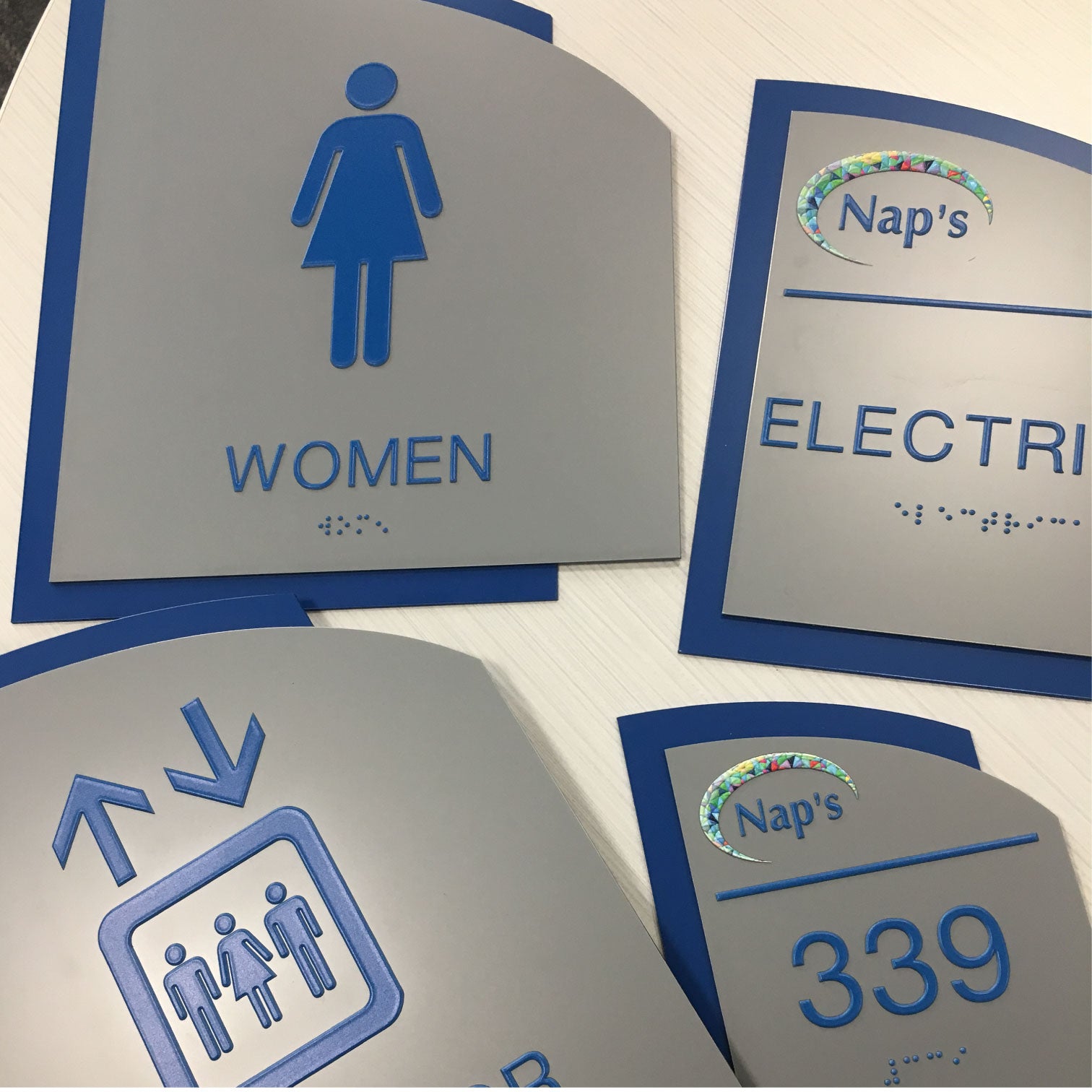Customizing ADA Signs to Satisfy Your Specific Requirements
Customizing ADA Signs to Satisfy Your Specific Requirements
Blog Article
Checking Out the Secret Features of ADA Signs for Enhanced Availability
In the world of ease of access, ADA signs serve as quiet yet effective allies, making sure that rooms are navigable and inclusive for people with impairments. By incorporating Braille and tactile components, these indications damage obstacles for the aesthetically damaged, while high-contrast shade plans and readable fonts provide to varied visual demands.
Relevance of ADA Compliance
Making sure compliance with the Americans with Disabilities Act (ADA) is essential for cultivating inclusivity and equivalent access in public areas and workplaces. The ADA, established in 1990, mandates that all public facilities, companies, and transport solutions fit individuals with impairments, guaranteeing they enjoy the very same legal rights and possibilities as others. Conformity with ADA standards not just meets legal responsibilities but also boosts an organization's online reputation by demonstrating its commitment to variety and inclusivity.
One of the key facets of ADA conformity is the application of easily accessible signage. ADA indications are developed to make certain that people with handicaps can easily navigate via structures and rooms.
In addition, adhering to ADA guidelines can mitigate the threat of possible penalties and legal effects. Organizations that fail to comply with ADA standards might encounter lawsuits or charges, which can be both economically burdensome and destructive to their public image. Therefore, ADA conformity is important to fostering an equitable setting for everyone.
Braille and Tactile Elements
The incorporation of Braille and responsive elements into ADA signage personifies the concepts of availability and inclusivity. It is generally placed beneath the matching message on signs to make certain that people can access the details without aesthetic support.
Responsive aspects expand beyond Braille and include elevated personalities and symbols. These parts are created to be discernible by touch, allowing people to recognize space numbers, washrooms, departures, and other essential areas. The ADA sets particular guidelines pertaining to the dimension, spacing, and positioning of these tactile components to enhance readability and make sure uniformity across various settings.

High-Contrast Color Pattern
High-contrast shade systems play an essential function in enhancing the presence and readability of ADA signs for individuals with visual impairments. These systems are essential as they make best use of the distinction in light reflectance between text and background, making certain that indications are quickly noticeable, even from a distance. The Americans with Disabilities Act (ADA) mandates the usage of particular color contrasts to accommodate those with limited vision, making it a crucial facet of conformity.
The efficacy of high-contrast colors depends on their capacity to stand out in numerous lights conditions, consisting of dimly lit settings and areas with glow. Commonly, dark message on a light background or light text on a dark history is employed to accomplish optimal contrast. For example, black text on a white or yellow background provides a plain visual distinction that assists in fast recognition and comprehension.

Legible Fonts and Text Dimension
When taking into consideration the design of ADA signs, the selection of understandable font styles and appropriate message size can not be overemphasized. These elements are essential for ensuring that indicators come to individuals with aesthetic problems. The Americans with Disabilities Act (ADA) mandates that fonts why not try this out need to be sans-serif and not italic, oblique, script, very attractive, or of uncommon type. These needs aid ensure that the message is easily understandable from a range and that the characters are distinct to diverse audiences.
The dimension of the text likewise plays a crucial duty in ease of access. According to ADA standards, the minimum message height must be 5/8 inch, and it must enhance proportionally with seeing range. This is specifically essential in public spaces where signage needs to be reviewed rapidly and accurately. Uniformity in message dimension adds to a cohesive visual experience, aiding individuals in browsing environments effectively.
Additionally, spacing in between letters and lines is indispensable to readability. Ample spacing prevents personalities from showing up crowded, boosting readability. By adhering to these standards, designers can dramatically enhance availability, guaranteeing that signs offers its intended function for all people, despite their visual capabilities.
Reliable Placement Approaches
Strategic positioning of ADA signs is vital for making the most of availability and making sure conformity with legal standards. ADA standards state that indications must be mounted at an elevation between 48 to 60 inches from the ground to ensure they are within the line of sight for both standing and seated individuals.
Additionally, indicators must be placed nearby to the lock side of doors to enable very easy recognition before access. Consistency in indication positioning throughout a center boosts predictability, minimizing complication and improving overall individual experience.

Final Thought
ADA signs play a crucial function in promoting access by integrating attributes that attend to the demands of people with impairments. Integrating Braille and responsive aspects ensures important information comes to the aesthetically impaired, while high-contrast color pattern and clear sans-serif font styles enhance exposure across various lights conditions. Effective positioning methods, such as appropriate installing elevations and critical areas, even more assist in navigation. These aspects jointly cultivate a comprehensive environment, emphasizing the importance of ADA compliance in making certain equivalent gain access to for all.
In see it here the realm of accessibility, ADA indications serve as quiet yet powerful allies, making sure that areas are comprehensive and accessible for people with handicaps. The ADA, passed in 1990, mandates that all public facilities, companies, and transport solutions fit people with specials needs, guaranteeing they appreciate the same legal rights and possibilities as others. ADA Signs. ADA indications are made to make certain that individuals with impairments can quickly browse through buildings and spaces. ADA guidelines specify that signs should be mounted at a height between 48 to 60 inches from the ground to guarantee they are within the line of sight for both standing and seated people.ADA signs play a crucial duty in promoting accessibility by integrating features that attend to the needs of people with disabilities
Report this page